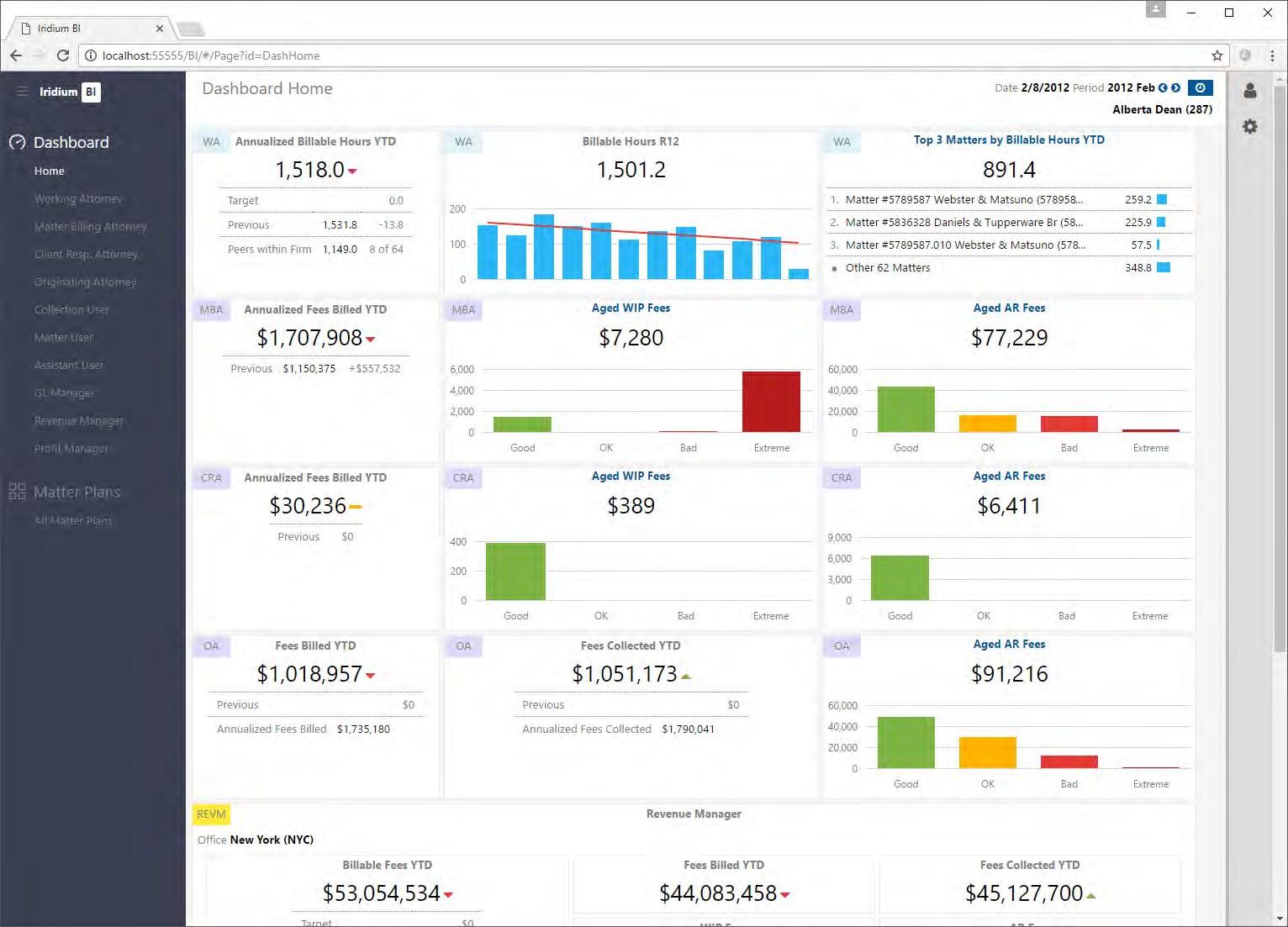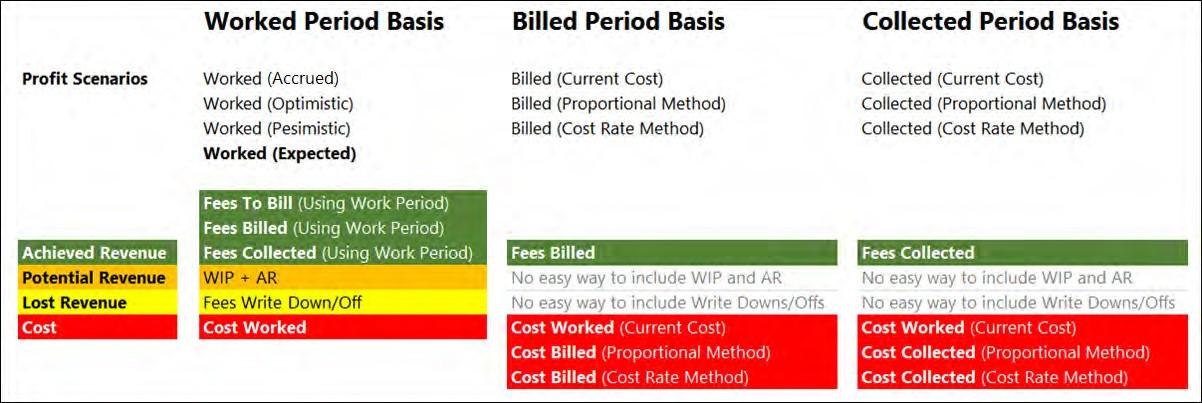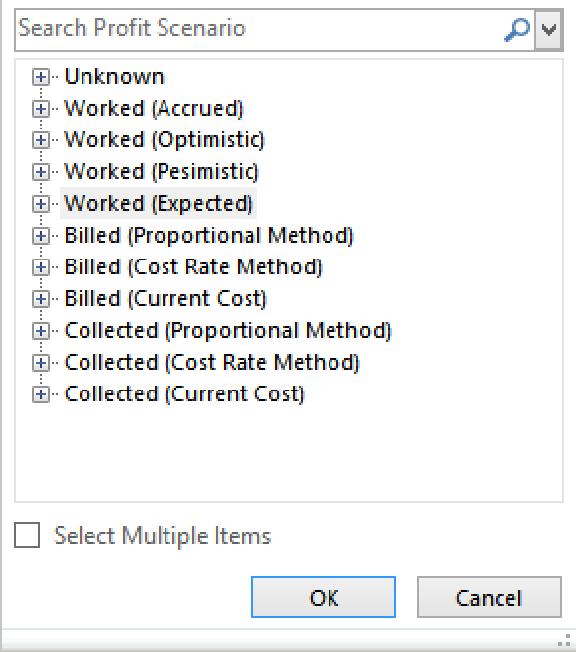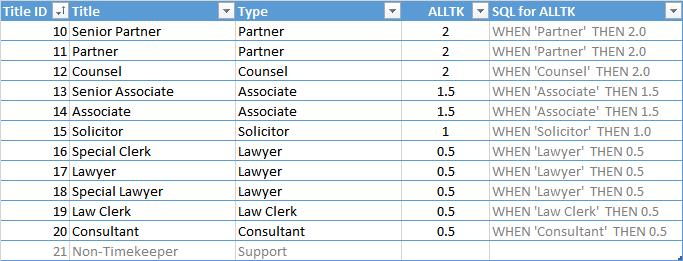
2 minute read
Data Sources
Profit Account Types (Fixed):
Profit Account Type Description
Revenue
Direct Cost
OverheadCost • Revenuethat is assigned to timekeepers (typically assigned directly and not allocated) • Costs that are passed directly through to the associated timekeepers
• Costs that are processed by the profitability engineand are allocated to timekeepers based on the rules and methods defined by the firm
Gross Profit
Profit • This is a system-defined Profit Account and cannot be removed or modified by clients
• This is a system-defined Profit Account and cannot be removed or modified by clients
Profit Account Categories
Each Profit Account is also assigned to a Profit Account Category. This is a second level grouping of Profit Accounts. These are not predefined like the Profit Account Types, so you can define new Profit Account Categories.
Default Profit Account Categories (can be modified by client):
Profit Account Category Description
Revenue
Direct Cost
OverheadCost • Revenuethat is assigned to timekeepers (typically assigned directly and not allocated) • Costs that are passed directly through to the associated timekeepers
• Costs that are processed by the profitability engineand are allocated to timekeepers based on the rules and methods defined by the firm
BEST PRACTICES:
If you want to do an analysis with a rollup of Profit Accounts that is different from the pre-defined Profit Account Types, this is your chance to do it. For example, your firm might have four Profit Accounts associated with Occupancy, and you could then define a Profit Account Category for Occupancy to roll them up for reporting and analysis.
Cost Data
Once you have defined your Profit Accounts, the next step is to create the mapping between the GL Accounts and the Profit Accounts, and then load the cost data.
GL Costs
This is a pretty straight-forward operation: For each GL cost account, the first question is whether or not you want to bring the cost from the GL into the Profit module. There are three reasons to exclude the GL Account from the mapping:
— The account is inactive, and there are no costs in the years for which the profit module will be populated
— The account costs will be loaded from another source, such as payroll costs. In this case please note you still might want to map this account since the residual amount should be calculated, loaded, and allocated.
— The account is not appropriate for loading into profitability – for example, it is an account that your firm is manually suppressing in the firm Income Statement
Payroll Costs
Each firm will need to determine the granularity of the payroll costs that they will bring into the profit module. Your payroll system may allow you to provide 20 or more “types” of costs: New York unemployment tax, life insurance deduction, retirement account contribution, health insurance, etc. This level of granularity is not required or applicable to profitability analysis. You will need to roll up these costs into Profit Accounts such as Salary, Bonus, Benefits, etc.
The table below shows a typical set of Payroll Profit Accounts. Your firm is encouraged to edit the payroll Profit Accounts and create new payroll Profit Accounts if necessary.
Profit Account
COMP-SALARY
COMP-BONUS
COMP-PARTNER
COMP-OTHER
Details
• Salary costs
• Bonus costs. Somefirms will create several additional bonus Profit Accounts to be able to report on different types of bonuses
• Partner-specific costs
• Can beused to hold retirement account matching, insurance, and other miscellaneous payroll costs






